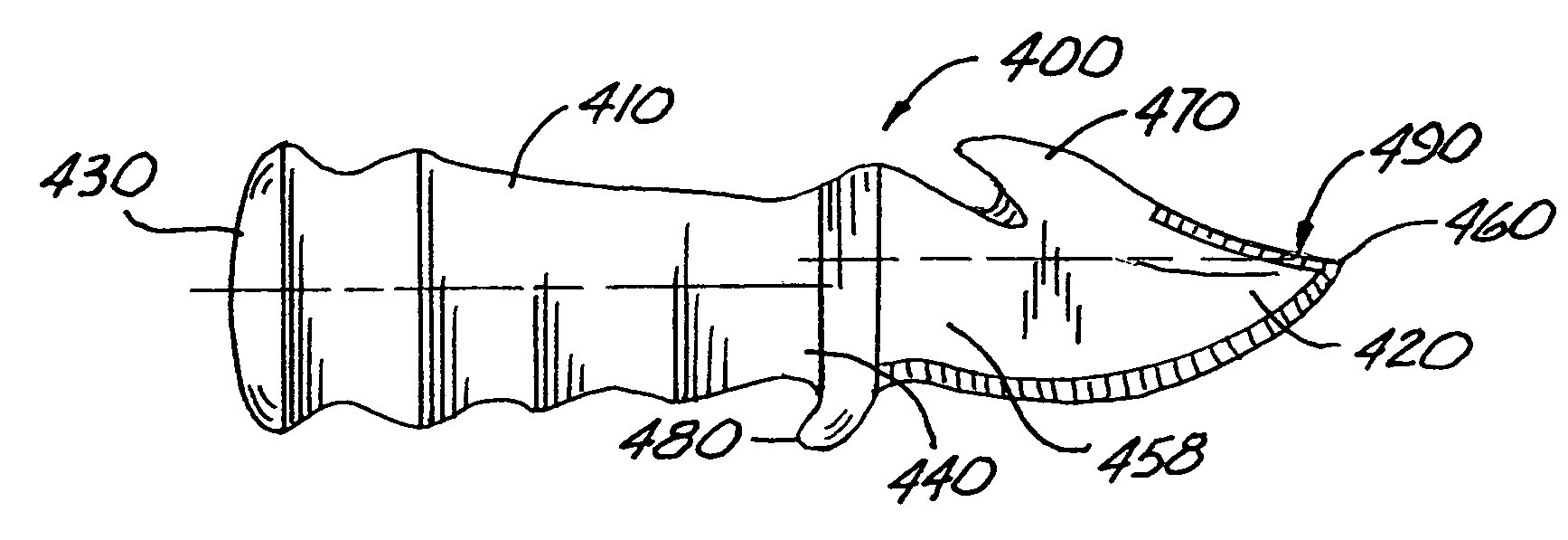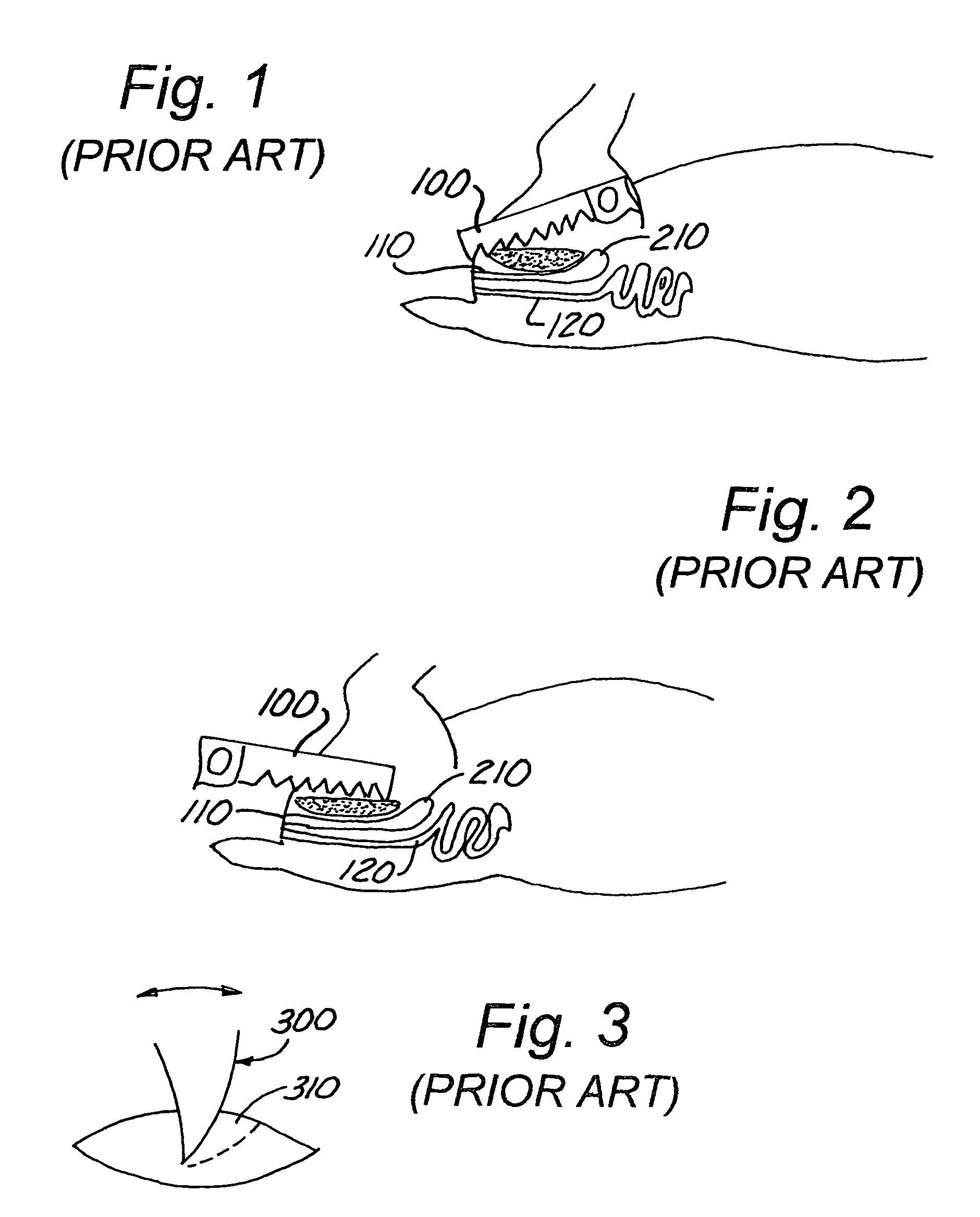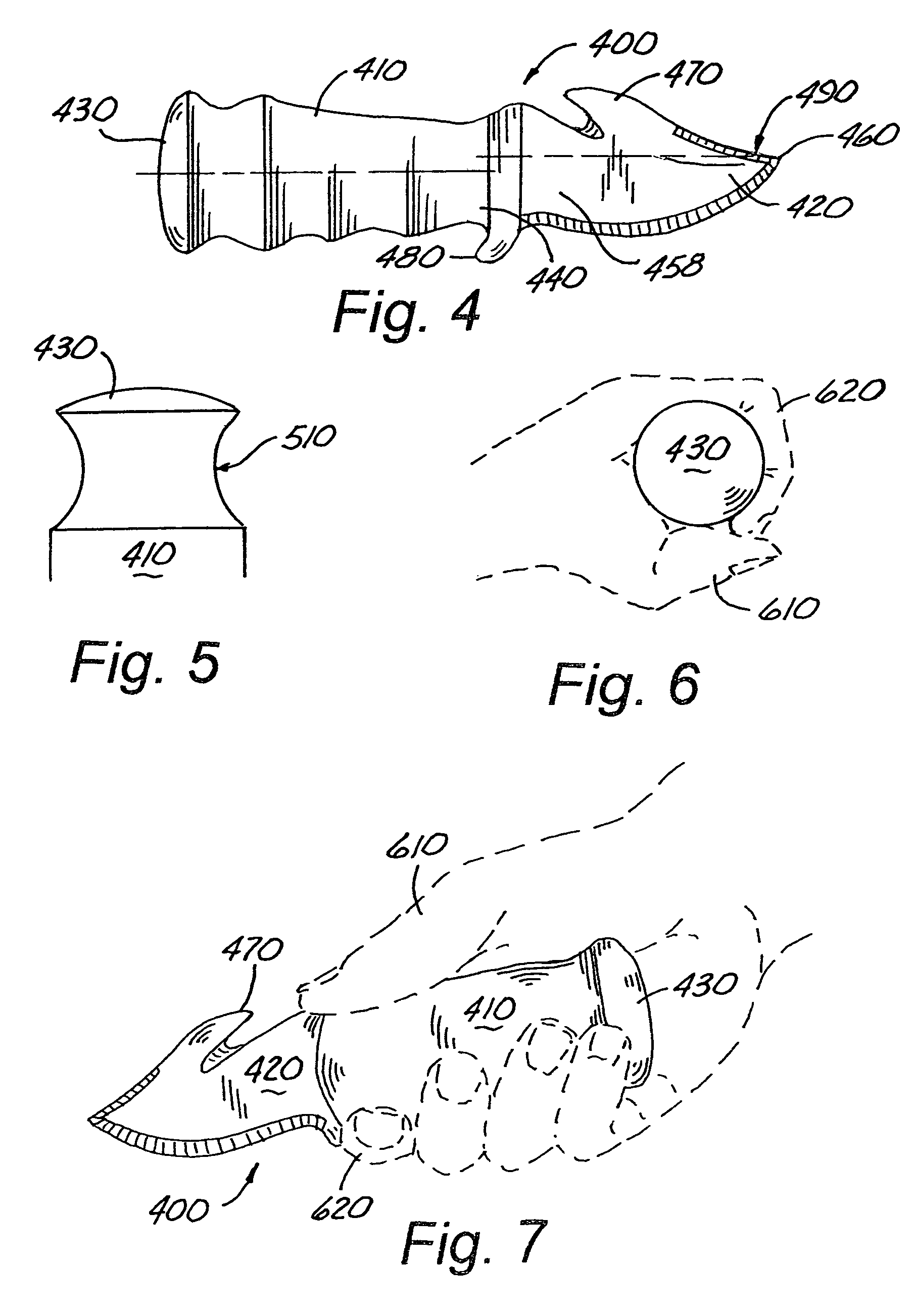Field dressing knife
a field dressing knife and blade technology, applied in the field of knives, can solve the problems of inability to pass the full blade of the saw blade, large handsaws b>100/b> in the field, and meat to be unfit for human consumption in a matter of hours, and achieve the effect of convenient and efficient splitting of the pelvis and brisket bones, and sufficient light and compa
- Summary
- Abstract
- Description
- Claims
- Application Information
AI Technical Summary
Benefits of technology
Problems solved by technology
Method used
Image
Examples
first embodiment
[0102]Three additional embodiments of the field dressing knife 400 are shown in FIGS. 23a, 23b, 24a, and 24b. In these embodiments, an existing knife may be enhanced by the addition of a broadened end cap 2310, 2410. In the first embodiment shown in FIGS. 23a and 23b, an insert 2320 of the broadened end cap 2310 is inserted into a socket in the end of the knife. The broadened end cap has a butt-end 430 having a large surface area, and a groove 510 for receiving a user's index finger and thumb, both as discussed for the other embodiments of the field dressing knife 400.
second embodiment
[0103]In the second embodiment, also shown in FIGS. 23a and 23b, the broadened end cap 2310 is made of an elastic material and the narrow section 2320 is stretched over the butt end of the handle of an existing knife. The broadened end cap 2310 is held tightly by the elasticity.
third embodiment
[0104]the broadened end cap 2410 is shown in FIGS. 24a and 24b. In this embodiment, the broadened end cap 2410 slides over the existing handle of the knife, and is held tight by snugly wrapping a strap 2420 about a base of the broadened end cap 2410. The strap is fitted with hook and loop fasteners. A slot 2430 provides sufficient flexure so the broadened end cap 2410 may be tightened down over the knife handle. The broadened end cap 2410 has a mushroom shape, providing a gripping place 2440 for the user's index finger and thumb as before.
[0105]Another valid securing method for the broadened end cap 2310 is threading. Male threads provided on the insert 2320 with corresponding female threads in the handle, or female threads on the first embodiment broadened end cap 2410 with corresponding male threads on the knife handle would be provided. The use of the broadened end caps 2310, 2410 would provide to an existing knife some of the advantages described herein for the field dressing kn...
PUM
 Login to View More
Login to View More Abstract
Description
Claims
Application Information
 Login to View More
Login to View More - R&D
- Intellectual Property
- Life Sciences
- Materials
- Tech Scout
- Unparalleled Data Quality
- Higher Quality Content
- 60% Fewer Hallucinations
Browse by: Latest US Patents, China's latest patents, Technical Efficacy Thesaurus, Application Domain, Technology Topic, Popular Technical Reports.
© 2025 PatSnap. All rights reserved.Legal|Privacy policy|Modern Slavery Act Transparency Statement|Sitemap|About US| Contact US: help@patsnap.com



